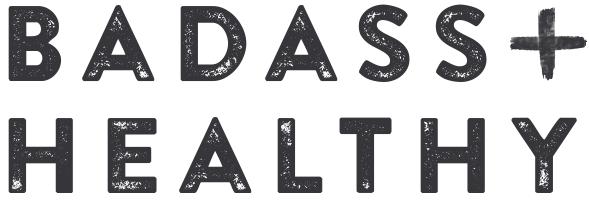The ultimate supportive friend...
It may seem like a new yoga studio or on demand yoga class is popping up every day—and I'll take it, thank you, the more options, the better! Our ubiquitous Lululemon-toting britches have come a long way from ancient yogis who were deemed pretty radical and existed on the fringes of society as far back as 800-500 BCE.
Fancy pants aside, the practice of yoga is blissfully ever evolving. There are so many different yoga styles—ranging from the athletic to the meditative—to choose from. IF YOU'RE ALREADY A YOGI, YOU MAY HAVE YOUR GO-TO STYLE. BUT IF YOU'RE NEW, YOU MIGHT NEED TO EXPERIMENT TO FIND THE BEST FIT.
Here, Rachelle Knowles, yoga instructor and founder of Cultivate Union, explains several different yoga styles and how to pick one that aligns best with your interests.
Breaking Down the Many Yoga Styles
Hot Styles
"Most traditional hot practices are some variation of Bikram Yoga, which includes a set sequence of 26 postures," Knowles explains. "You may see classes titled 'Hot,' which typically means they are practicing the Bikram sequence, but may be [doing it] in their own way."
This is not to be confused with heated rooms, though. Some studios prefer to heat their practice rooms to warm the muscles and make you sweat, but are not calling their classes "hot yoga," as they do not follow a Bikram-like sequence.
Form Styles
Outside of the "hot" classes, you can pretty much break yoga styles into flow or form. Form styles, such as Iyengar, Kripalu and Anusara, are slow and steady with time to explore each shape. "Most of the form styles are born from Hatha Yoga, [a classical approach to yogic breathing and exercises.] Classes like Iyengar Yoga truly break down form and give students the opportunity to explore detailed alignment instruction with the support of props. In fact, we can thank Mr. Iyengar for the creation of many yoga props we use in classes today," Knowles says.
Flow Styles
In flow yoga classes, you may find teachers emphasizing moving with the breath and other aspects of posture like drishti (gaze) and bandhas (body locks of energy), Knowles explains. You’ll find these emphasized in practices such as Ashtanga, Vinyasa, Baptiste, Kundalini and Jivamukti. These styles tend to be quite vigorous and push your fitness edge.
Chill Styles
The more chill classes, such as Restorative, Yin and Yoga Nidra, are low to the ground and are universally relaxing, although they have different aims. "Yin yoga, for example, works with fascia and connective tissue, which is why postures are held for longer to assist students in releasing tension, whereas restorative classes are like a reset for the nervous system and are meant to help students feel support and consciously rest into the release," Knowles says. These are a wonderful complement to more active styles.
PRENATAL YOGA
Baby on the way? This style helps moms-to-be stay in shape and prep for birth with adapted poses made for the preggers set.
How to Choose the Right Yoga Style for You
When choosing a class, go with your gut. "If the sound of hot yoga makes you cringe, seek out a studio that isn’t heated," Knowles says. "If you’re not into chanting or breath work [like you'll find in Jivamukti], it’s OK, find a class where you have the opportunity to get into your body through moving meditation."
Speaking of movement, you might also consider whether or not you’d like a class that is focused on flow (moving breath by breath) or form (slow and steady with time to explore the shapes). Some styles, like Yogahour, are a blend of both! "Just remember that yoga is meant to help you be more of who you are, so pick classes that you love with teachers whom you want to learn from. With time, your practice will deepen and grow in a way that’s authentic to you, whether that’s working on handstands or spending lots of time on your meditation cushion," Knowles advises.
More Yoga History
Knowing the story behind something always gives it more meaning. In case you're as much of a history dork as I am, here's what Knowles has to say about the interesting beginnings of yoga...
"Yoga is an ancient oral tradition that was passed from teacher to student. The first written evidence of yoga practices come from Vedic culture, which some yoga historians believe originated in Nepal. The earliest written yoga texts that we know of are the Rig Vedas, a book of hymns that addressed questions about the universal human experience, metaphysics and philosophy that dates between 800-500 BCE.
The word asana, meaning posture, first shows up in Patanjali’s Yoga Sutras, which is estimated to date back to 2nd century CE. Postural yoga as we know it was popularized in the early 21st century when T. Krishnamacharya, who is considered the father of modern day yoga, began to innovate within the physical practice of asana by blending hatha yoga with Western gymnastics.
His students, Indra Devi, BKS Iyengar, Pattabhi Jois and TKV Desikachar, to name a few, would carry on this lineage into the West. From those four students, three major lineages of yoga were born: Iyengar, Ashtanga and Viniyoga. That innovation continues on today as teachers blend styles like yin and vinyasa, as well as bringing in other practices into yoga, like Sculpt, which includes a major fitness factor."
There you have it! Now that you know what an asana is and can decipher one practice from the next, which one are you going to try out first?
Use these easy 5 Stress-Relieving At-Home Yoga Poses when you need to wind down from a hectic day.

